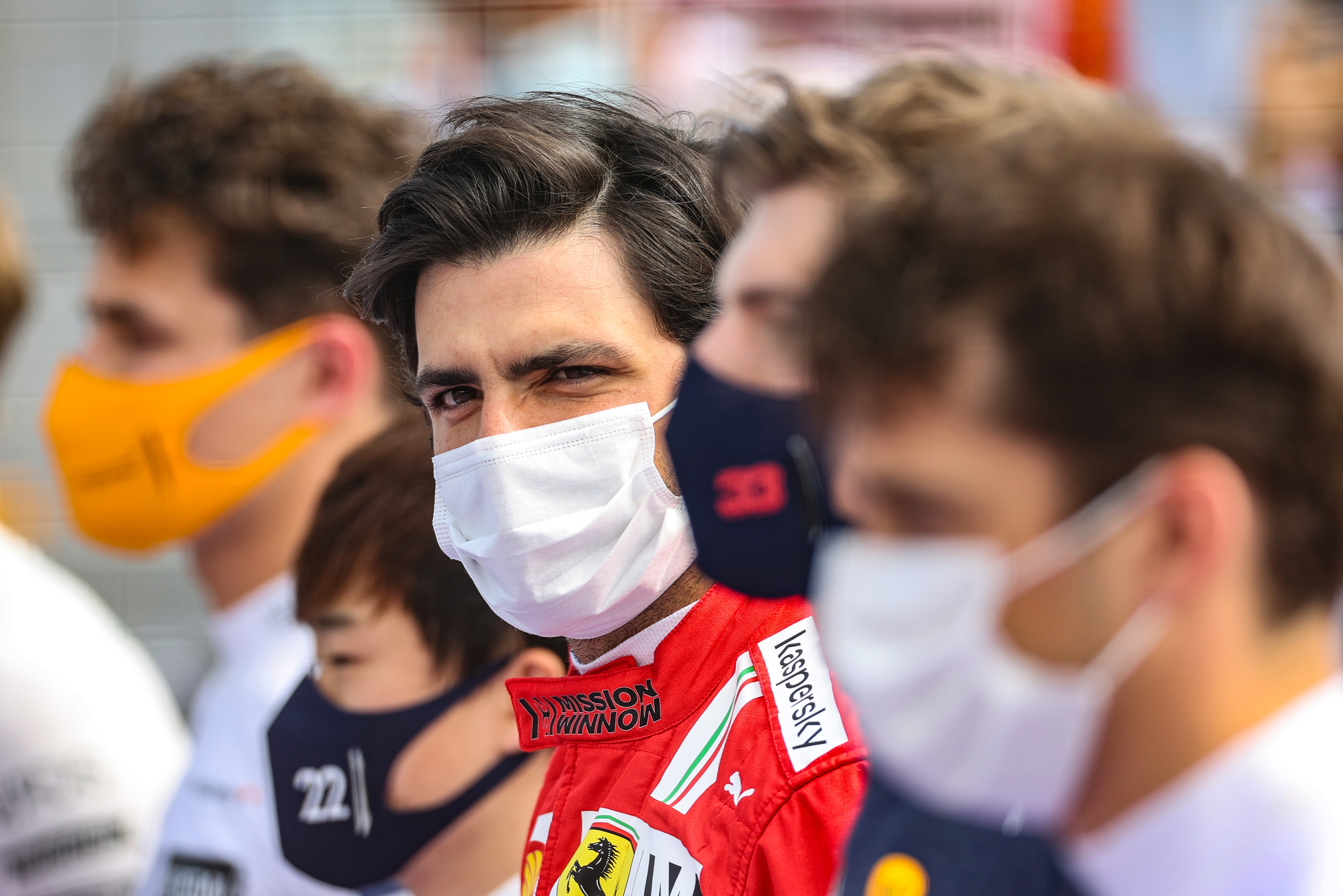Up Next

Carlos Sainz believes that the Pirelli Formula 1 tyre is too sensitive to pressure and temperature and that this has probably played a part in the blow-out controversy in Baku.
But the blow outs and the subsequent results of Pirelli’s investigation into them have led him and Ferrari, he believes, into a better understanding of the performance of their own car.
“There are two different issues we need to face,” he said. “Firstly, in my opinion as a driver, a tyre should not fail or not fail depending on 2psi up or down.
“Secondly, if there are concerns that the tyre might fail below a certain pressure then the teams should never put their drivers at risk of a tyre blowing up just for performance reasons.
“It’s no secret that teams are seeking cooling and protecting themselves from overheating the tyre. We know the Pirelli overheats and everyone is struggling with the heat of the rear tyres.
“Baku was no exception so I’m sure every team was doing whatever it could to keep temperatures and pressures as low as possible. Whether they went below their limits only those teams can know that.
“But we are very good in qualifying at switching the tyres on. We are not very good in the race with overheating.
“So this gives us some clues as to the reasons why we were not so good in the race, clarifications for why we can make it work over one lap in qualifying but then go backwards.
“There’s a trend there. It’s going to help us understand the whole picture.”

Without quite spelling it out, Sainz is inferring that if other teams have been running below the minimum pressures in order to maximise tyre cooling, it would explain why Ferrari is relatively better in qualifying (when the challenge is to generate tyre temperature quickly) than the race (where the challenge is to keep the tyres cool enough).
He is overall very much in favour of the new post-race protocol whereby the FIA can take a tyre used in the race and measure its pressure after it has cooled and then been heated by the tyre blankets.
“I think it will help everyone to centre on the Pirelli prescriptions. That can only help,” he added.
Sainz went on to refer to his seven-year F1 career as ‘an adventure’ in learning about the Pirelli tyres.
“Before F1 I had never experienced so much tyre deg, overheating and how much sensitive they are, where half a psi or 5-deg of temperature can give you so much performance,” he said.
“So as a driver the technical understanding and how a tyre works, I’ve learned a lot: how to manage the tyre, how to push the team in certain directions to try to develop the car to protect the tyres. It’s been an eye opener for me. These last seven years have been a big learning curve.
“If the pressures after a safety car are too low then we are too exposed as drivers. With all respect to Pirelli, I do believe the tyre should be more resilient to different conditions.”





